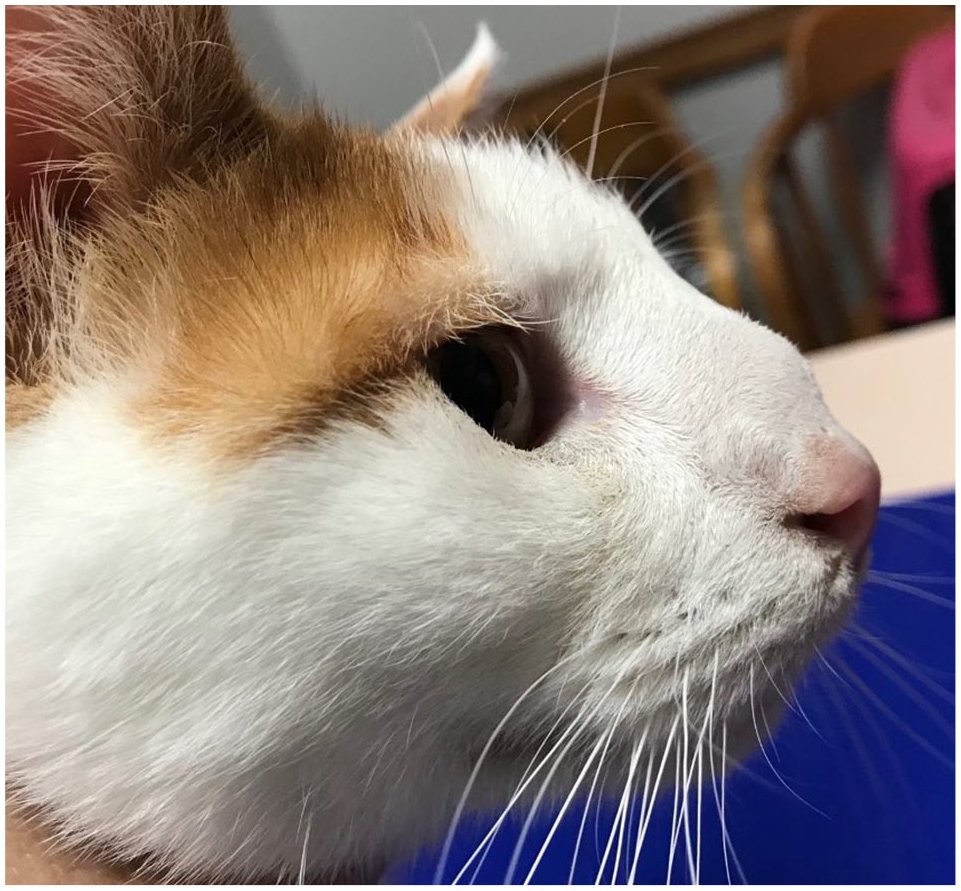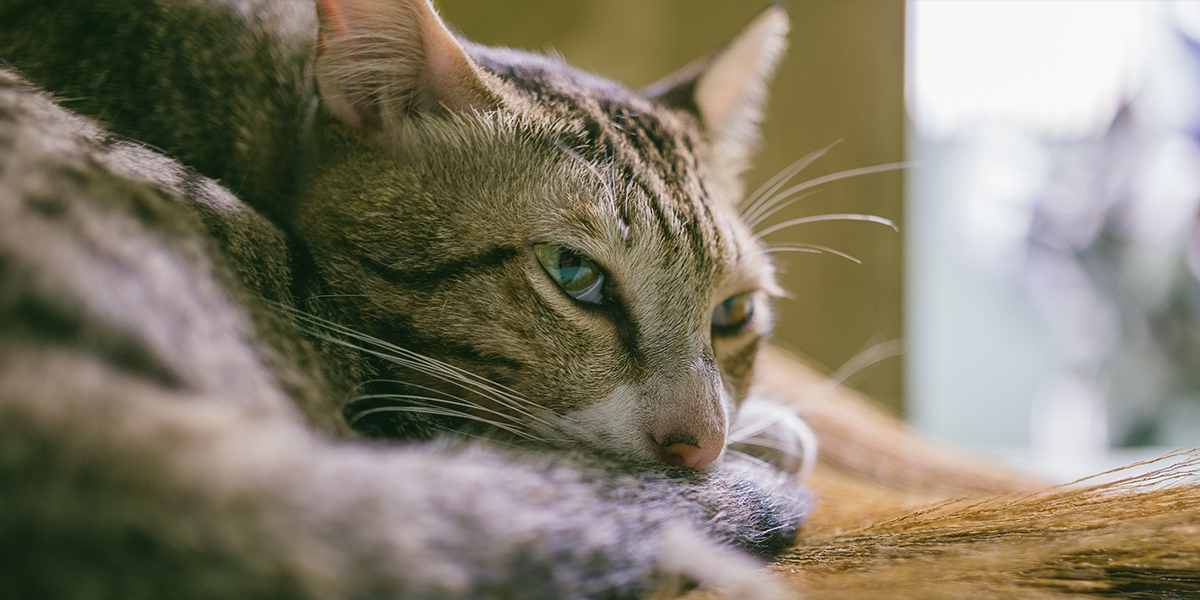fungal rhinitis in cats
Ad Natural Herbal Remedy for the Relief of Rhinitis in Cats. Computed tomography CT imaging and.
Signs of fungal rhinitis include epistaxis sneezing mucopurulent nasal discharge and exophthalmos.

. Fungal rhinitis is an uncommon cause of chronic rhinitis in cats although in some geographic areas the disease is seen frequently8 9 19 Nasal cryptococcosis is most common and nasal aspergillosis is only occasionally encountered. Viral rhinitis is especially prevalent in kittens. Facial deformity of the rostral aspect of the nose is often striking in cats with cryptococcosis.
Older cats tend to develop rhinitis due to tumors or dental disease and brachycephalic short-nosed cats are more prone to chronic viral causes. The intent of this article is to review the published literature addressing the role of fungi as causative agents in allergic rhinitis and rhinosinusitis. Fungal rhinitis and sinusitis in three cats.
In dogs and cats it may be acute or chronic and may have a viral bacterial or allergic cause. KEYWORDS chronic rhinitis feline chronic rhinosinusitis C hronic rhinitis is a common and important problem in cats that may result from a number of intranasal or sys-temic disorders Table 1. In contrast fungal infection or neoplasia typically results in a mass lesion.
Fungal plaques were observed rhinoscopically in 2 cats and histologic examination of biopsy specimens revealed fungal colonies with surrounding inflammatory infiltrates in all 3. Any underlying cause should be corrected. Signs of fungal rhinitis include epistaxis sneezing mucopurulent nasal discharge and exophthalmous.
Fungal rhinitis is uncommon in the cat and cases of nasal aspergillosis-penicilliosis have been rarely reported. Fungal rhinitis should be treated with antifungal drugs eg itraconazole fluconazole ketoconazole. Cats who are provided antibiotic drugs or immunosuppressive agents long-term appear to be more susceptible to fungal infections.
Easy Refills with Autoship. Another serious cause of rhinitis in cats are fungi such as Cryptococcus. Signs of fungal rhinitis include epistaxis sneezing mucopurulent nasal discharge and exophthalmous.
Chronic rhinitis can be found cats of any age or breed although the causes are likely to vary depending on age. For example the distemper virus aspergillosis can cause rhinosinusitis in dogs. Ambient mold spores are widely distributed in nature and an estimated 3 to 10 of the worlds population is allergic to molds.
Common Fungal Infections in Cats While your cats health can be impacted by many different types of fungi in the environment there are some infections we see more than others. Rhinitis or sinusitis is an inflammation of the mucosa lining of the nasal cavity or sinuses. In these cases the cats nasal discharge will only appear through one of the orifices as in the case of polyps or tumors.
It is seen in cats of all ages and breeds but the young cats tend to be more prone to the infectious causes. Fungal rhinitis is uncommon in the cat and cases of nasal aspergillosispenicilliosis have been rarely reported. This such fungi are responsible for fungal rhinitis in cats and can also form granulomas in cats.
In cats the most common cause is cryptococcosis. Sinusitis meanwhile refers to the inflammation in the nasal passages. The emphasis is on management not cure.
Many different viral infections can infect our pets and lead to rhinitis and sinusitis. Other causes of chronic rhinitis might be a fungal infection or allergies to elements of the environment such as smoke mold birds or bird feces detergents or other chemicals in the household. Brachycephalic feline breeds seem to be at increased risk for development of nasal aspergillosispenicilliosis.
Localized infection of the nasal or paranasal cavities caused by Aspergillus spp or Penicillium spp was diagnosed in 3 cats. Brachycephalic feline breeds seem to be at increased risk for development of nasal aspergillosis-penicilliosis. Inflammation of a cats nose is referred to as rhinitis.
Fungal rhinitis is uncommon in the cat and cases of nasal aspergillosispenicilliosis have been rarely reported. Laryngeal paralysis can be ameliorated by performing a unilateral laryngeal tie-back. Idiopathic chronic rhinosinusitis and nasal neoplasia are the most common causes of chronic nasal disease in cats1 Nasopharyngeal polyps fungal.
Cats with aspergillosis can display a mass effect or occasionally have cavitated rhinitis and fungal plaques similar to those in dogs with the condition. Sinu-Help for Cats Addresses Sinus Symptoms Including Runny Nose Sneezing Cough in Cats. This case demonstrates that histoplasmosis can present as chronic nasal disease in cats.
There are compelling epidemiologic links between mold fungal. Rhinitis sinusitis or rhinosinusitis are not usually associated with bacterial infection but rather with viral fungal or parasitic disease. Fungal infections in cats may be concentrated in one area such as the nose and nasal passages lungs often leading to fungal pneumonia in cats or skin but they can also spread throughout the animals body leading to more generalized symptoms.
Fungal nasal and sinus inflammation may be caused by the fungi Cryptococcus neoformans relatively common in cats or Aspergillus subspecies and Penicillium subspecies both relatively rare in cats. Sinusitis is usually associated with diseases of the nasal cavity but is most often related to. Results of fungal culture were negative for all 3 cats.
Brachycephalic feline breeds seem to be at increased risk for development of nasal aspergillosispenicilliosis. Clinical signs included chronic mucopurulent nasal discharge epistaxis and mandibular lymphadenopathy. Signs of rhinitis include nasal discharge sneezing pawing at the face snoring open-mouth breathing and labored inhalation.
Rhinitis is defined as inflammation of the mucous membranes of the nose. Cats with CRS tend to have destructive rhinitis with loss of turbinates. Results of serum immunoelectrophoresis for antibodies against Aspergillus spp were positive in 2 cats.
Both medical conditions can cause mucus discharge to develop. Rhinitis and Sinusitis in Cats. Fungal rhinitis is an uncommon cause of chronic rhinitis in cats although in some geographic areas the disease is seen frequently8 9 19 Nasal cryptococcosis is most common and nasal aspergillosis is only occasionally encountered.
With prolonged inflammation bacterial infections are common. Post-viral rhinitisidiopathic rhinitis is rarely curable.

Invasive Fungal Rhinitis With Adnexal Involvement Caused By Histoplasma Capsulatum In A Cat From A Non Enzootic Location
Case Report Alternaria Infection In A Domestic Cat Downs Veterinary Referrals

Chronic Upper Respiratory Tract Disease International Cat Care

Invasive Fungal Rhinitis With Adnexal Involvement Caused By Histoplasma Capsulatum In A Cat From A Non Enzootic Location

Feline Rhinitis And Upper Respiratory Disease Today S Veterinary Practice

Sinonasal Aspergillosis In A British Shorthair Cat In The Uk Semantic Scholar

Localised Fungal Infection In An Immune Competent Cat Probably After A Download Scientific Diagram

Feline Rhinitis And Upper Respiratory Disease Today S Veterinary Practice

Rhinosinusitis In Companion Animals

International Society Of Feline Medicine Free Access Friday Invasive Fungal Rhinitis With Adnexal Involvement Caused By Histoplasma Capsulatum In A Cat From A Non Enzootic Location This Report Describes A Cat With

Cat Sinus Infection Home Remedies

Nose And Sinus Inflammation In Cats Petmd

Complete Clinical Response To Combined Antifungal Therapy In Two Cats With Invasive Fungal Rhinosinusitis Caused By Cryptic Aspergillus Species In Section Fumigati Sciencedirect

Area Of Alopecia Caused By Microsporum Canis Infection In A Cat Download Scientific Diagram

Chronic Rhinitis In The Cat Veterinary Clinics Small Animal Practice
